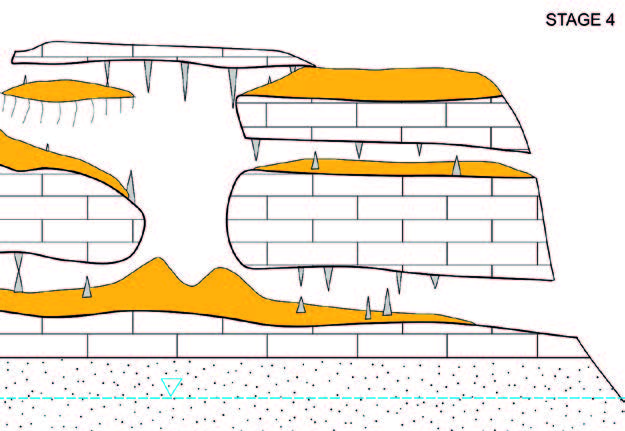A framework for assessing the role of karst conduit morphology, hydrology, and evolution in the transport and storage of carbon and associated sediments
DOI:
https://doi.org/10.3986/ac.v42i2-3.662Ključne besede:
Sediment, carbon, paleokarst, conduit morphology, karst hydrology, sequestrationPovzetek
Karst aquifers and conduits form by dissolution of carbonate minerals and the slow release of inorganic carbon to the surface environment. As conduits evolve in size, morphology, and position within the aquifer, their function and capacity change relative to the storage and transport of inorganic and organic carbon as sediment. Conduits serve mostly as transport mechanisms in relation to sediments. Quantified data are sparse, but for conduits to function effectively there must be at least equilibrium in the amount of sediment entering and exiting the aquifer. If sediment discharge exceeds input, little sediment will remain underground. When natural declines in base level cease removing sediments and only deposit calcite speleothems, these materials are stored until the rock mass is denuded. While sediment storage is mostly transient in hydrologically active conduits, relative differences occur. Aquifers with conduits developed at multiple levels or as floodwater mazes store proportionately greater volumes of sediment. Hypogenic systems should store greater volumes of sediment than epigenic aquifers because they mostly discharge a dissolved load as opposed to both dissolved and suspended clastic loads. However, some hypogenic aquifers are diffusely recharged and receive and store little sediment from the surface. The global volume of sediment and organic carbon stored in karst aquifers is estimated in this study to be on the order of 2x104 km3and 2x102 km3, respectively. The amount of organic carbon stored in paleokarst is not estimated, but available data indicate it is substantially greater than that stored in modern karst aquifers. Development of such data may suggest that paleokarst petroleum reservoirs might serve as efficient carbon sinks for global carbon sequestration. Hydrocarbon-depleted paleokarst reservoirs should provide substantially more storage per injection well than sequestration in non-paleokarstic rocks.
Keywords: Sediment, carbon, paleokarst, conduit morphology, karst hydrology, sequestration.
Prenosi

Prenosi
Objavljeno
Kako citirati
Številka
Rubrike
Licenca
Avtorji jamčijo, da je delo njihova avtorska stvaritev, da v njem niso kršene avtorske pravice tretjih oseb ali kake druge pravice. V primeru zahtevkov tretjih oseb se avtorji zavezujejo, da bodo varovali interese založnika ter da bodo povrnili morebitno škodo.
Podrobneje v rubriki: Prispevki




